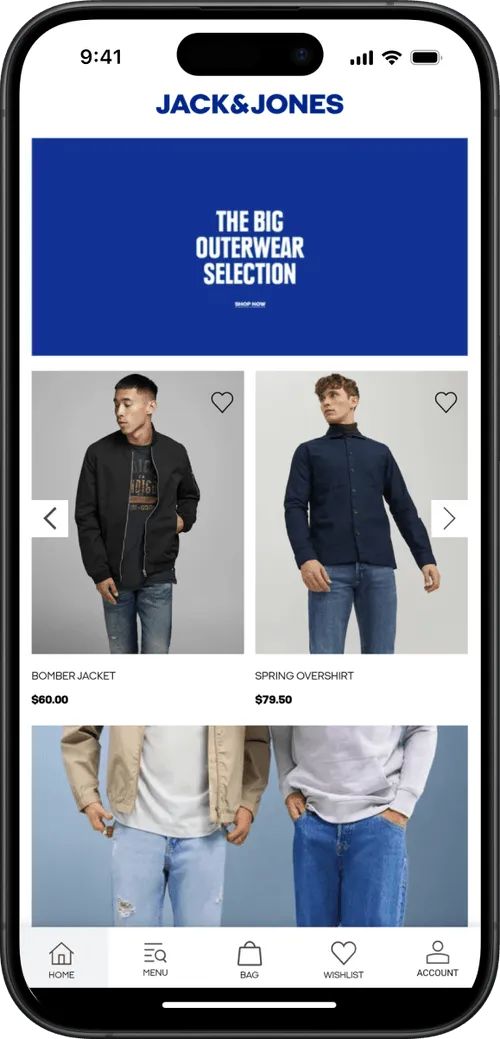Average Cart Abandonment Rate (Plus 16 Cart Abandonment Statistics) for 2025
- On average, approximately 70% of all shopping carts are abandoned without a purchase.
- Cart abandonment is more common on mobile, and more common for traffic referred from social media.
- The most common reason people abandon carts is due to excessive extra costs, such as shipping and fees.
- To reduce your abandoned cart rate, build a simpler checkout experience, and build a mobile app to reach out to abandoned carts with push notifications.
- On average, approximately 70% of all shopping carts are abandoned without a purchase.
- Cart abandonment is more common on mobile, and more common for traffic referred from social media.
- The most common reason people abandon carts is due to excessive extra costs, such as shipping and fees.
- To reduce your abandoned cart rate, build a simpler checkout experience, and build a mobile app to reach out to abandoned carts with push notifications.
In this article, we're going to share the latest and most insightful cart abandonment statistics, including:
- Average cart abandonment rate
- Cart abandonment rate by device
- Cart abandonment rate by traffic source
- Yearly cart abandonment trends
- Cart abandonment by product category
- Why people abandon carts
... and more.
Read on as we share everything you’ll ever need to know about shopping cart abandonment, followed by some quick tips on how to improve cart abandonment rate for your business.
Cart abandonment is when a user adds a product to their cart, but doesn’t complete the checkout process and pay. Cart abandonment is a large cause of lost revenue for eCommerce stores, and improving this metric is one of the most direct ways to increase your store’s income.
What is the Average Cart Abandonment Rate?
The average cart abandonment rate across all eCommerce sites is 70.19%, according to Baymard Institute.
This number is an average taken from 59 different studies on shopping cart abandonment. The averages from these studies range from 56-84%.
With 70% of eCommerce shopping carts abandoned, that means for every 10 customers who add a product to their cart, only 3 will go through and complete their purchase.
Cart Abandonment Trends
Since 2006, the average shopping cart abandonment rate has increased from 59.8%, to approximately 70% as it stands now.
Cart abandonment peaks at 72% in 2012, before dropping slightly, though has been steadily increasing since 2014.
Here are the yearly average cart abandonment rate each year since 2006:

Shopping Cart Abandonment Statistics
Now let’s run through some more insightful data surrounding shopping cart abandonment, so you can get a complete understanding of how different user attributes (such as location, demographics, device and traffic source) affect how likely it is for someone to leave your site without completing the checkout process.
Shopping Cart Abandonment Rate by Device
Here is the online shopping cart abandonment rate for desktop, mobile and tablet respectively:
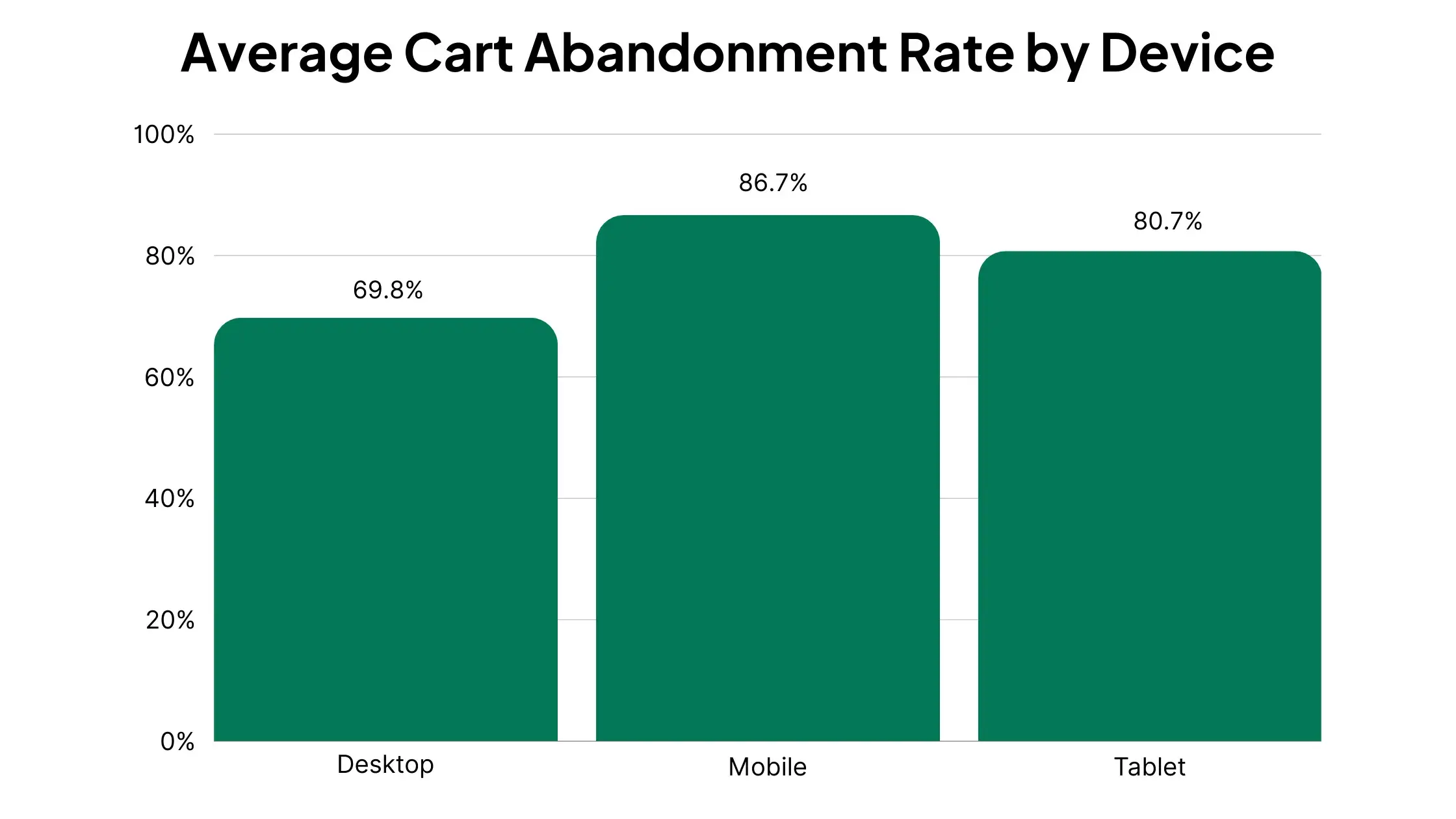
The data shows that desktop users are significantly more likely to complete their checkout than tablet and mobile users.
This implies a huge opportunity to decrease cart abandonment rate, and thus increase your online sales, by making improvements to your checkout flow on mobile.
Which Categories Have the Highest Cart Abandonment Rates?
According to SaleCycle, Telco, Home Furnishings and Automotive are the categories with the highest rates of cart abandonment.
On the other end of the scale, Groceries and Electronics have significantly lower rates of cart abandonment, meaning shoppers are a lot more likely to complete their purchases with these product categories.
Check out the full data below:

Cart Abandonment by Traffic Source
Traffic source makes a big difference in how many customers abandon online shopping carts.
Data shows users from social media are most likely to abandon their carts, at a huge 91%. On the lower end, search traffic users are the least likely to result in an abandoned cart.
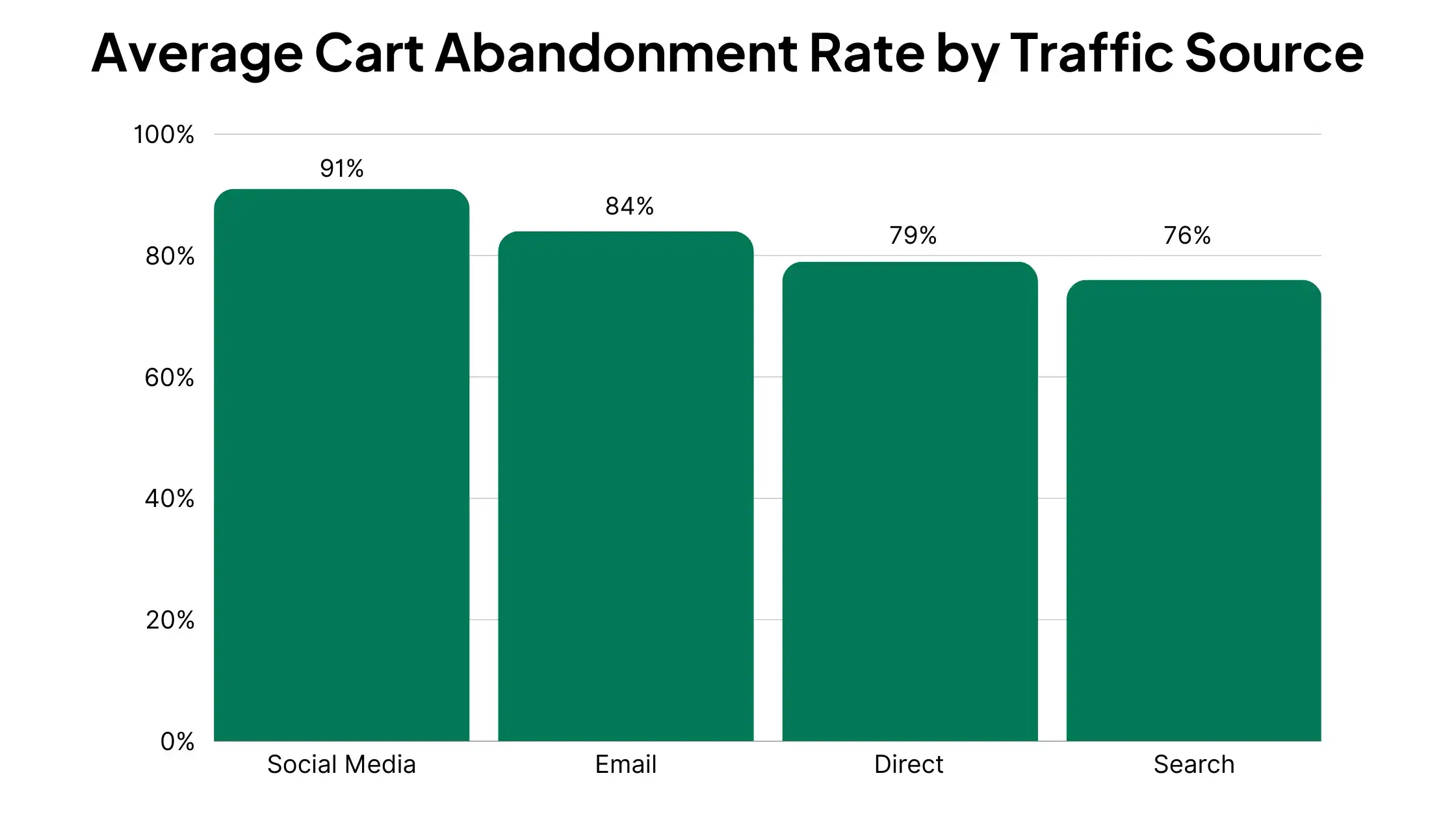
Cart Abandonment Rates Around the World
Cart abandonment is more or less common in different areas of the world.
According to SaleCycle data published in Statista, users in the Caribbean have the highest average abandonment rate, while Asia & Pacific consumers have the lowest.
Europe and North American shoppers come in on the lower end of the scale as well.
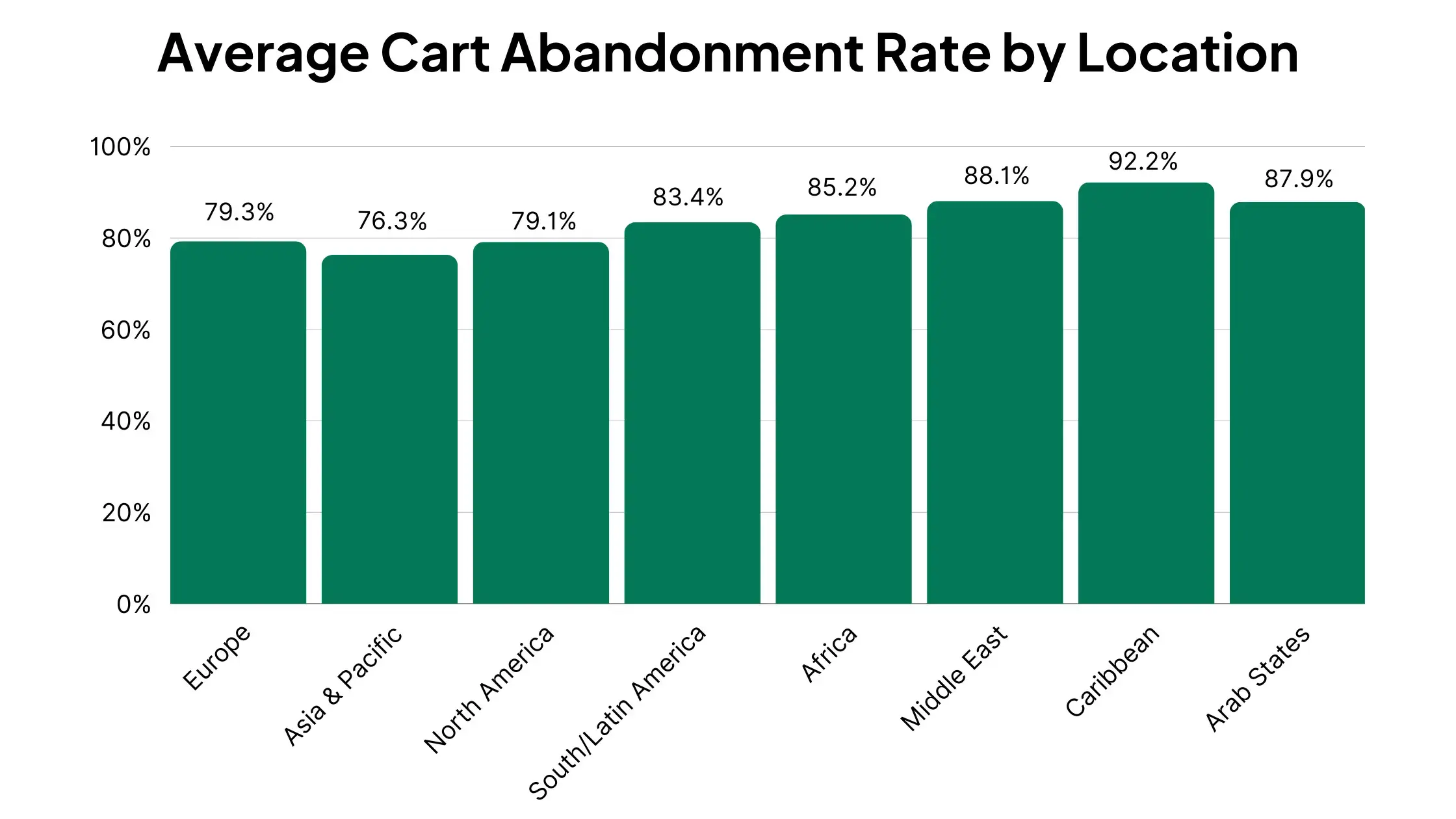
Cart Abandonment Demographics
A study by Contentsquare found that the 25-34 age group is most likely to result in an abandoned cart.
Their study found that 21% of 25-34 year olds had abandoned a cart at least once. The next most common were 35-44 (20%) and 45-54 (13%).
Overall, 81% of their respondents reported abandoning a cart at least once.

Why Do Shoppers Abandon Carts?
The shopping cart abandonment statistics above give some interesting insight into what kind of online shoppers are more or less likely to leave their cart abandoned. But there’s not a lot you can action from that data, other than adjusting your expectations for users from different age groups, traffic sources, etc.
More importantly, you want to know why online shoppers abandon their carts. With this information, you can start crafting strategies to reduce card abandonment and capture more revenue that would otherwise be lost.
According to a survey from Baymard Institute, far and away the most common reason shoppers abandon their cart is due to extra costs that appear during checkout, such as shipping costs, taxes or other fees.
In their study, 47% of respondents said they had abandoned a cart for this reason.
Distant second and third place reasons were that the site wanted the customer to create an account (25% of respondents) and slow delivery (24%).
See the full results below:
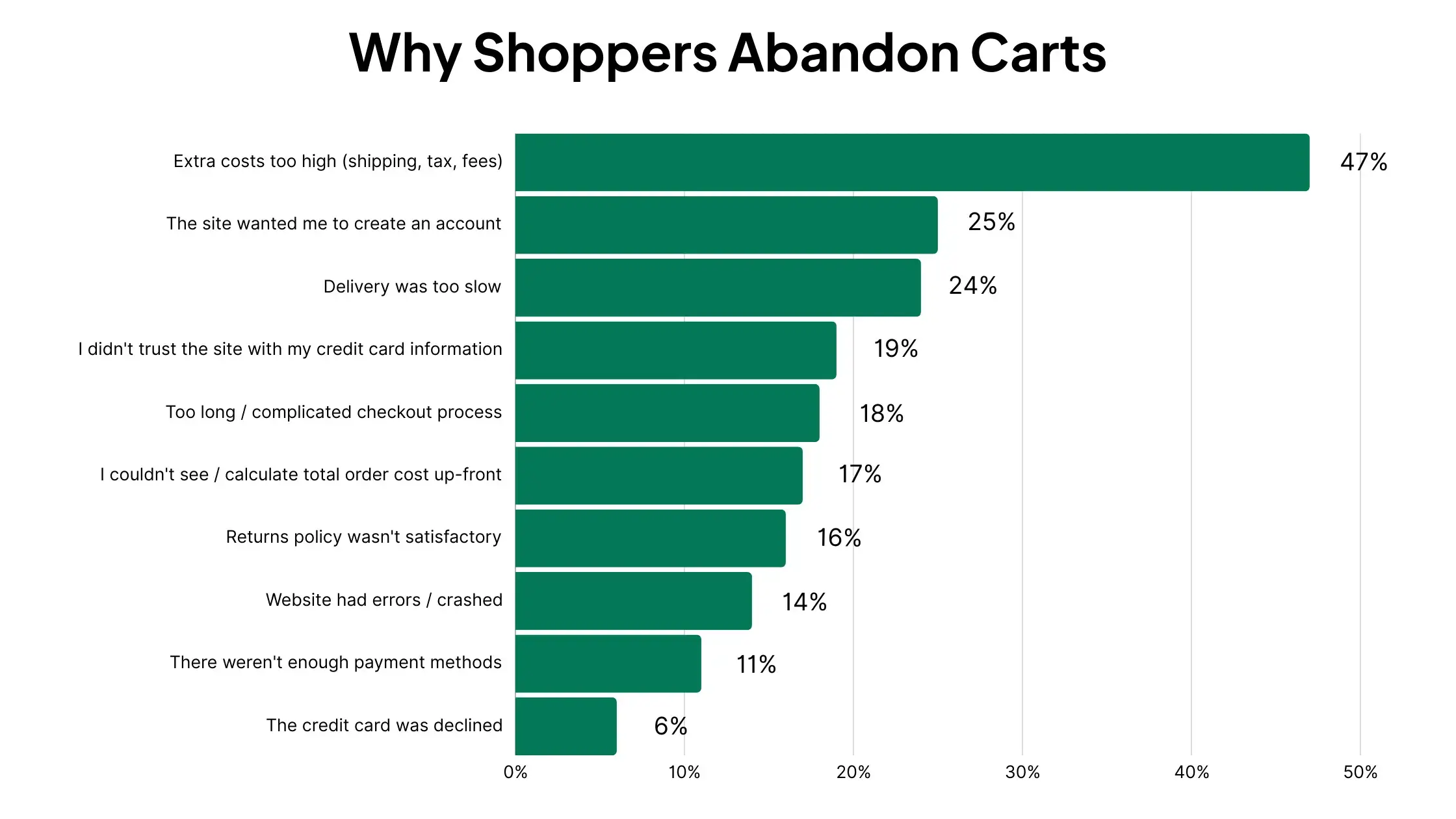
The Impact of Abandoned Carts
If you’re not yet convinced that shopping cart abandonment is a big deal, let the data convince you.
Customer engagement platform Swrve suggests that $4 trillion worth of products will be left abandoned in carts this year alone.
Some of this “lost” revenue will come back, if you implement smart abandoned cart email and retargeting campaigns. Some will be gone forever.
In the worst case scenario, a shopper who abandons their cart in your online store will turn around and buy the item(s) they were looking at from a different retailer.
A study in the UK found approximately 26% of abandoned carts resulted in the shopper buying from a different store - a clear sign that there were solvable issues with the original store that turned them off from making a purchase.
If you don’t address the issue of cart abandonment, not only are you leaving revenue on the table, you’re providing a platform for consumers to research products in your store, but complete their purchase with your competition.
Abandoned Cart Recovery Statistics
The good news for retailers is that revenue left in an abandoned cart is not necessarily gone forever. Experts estimate that $260 billion in abandoned revenue is recoverable.
Retargeting ads and direct messaging channels are commonly used and effective ways to recapture users who abandoned their cart in your store.
Abandoned Cart Retargeting Ads
According to MotoCMS, retargeting ads reduce cart abandonment by 6.5%, and have the potential to increase sales by 20%. Yet only 27% of the retail industry utilizes retargeting ads for abandoned carts.
Abandoned Cart Emails
When it comes to emails, a Moosend survey found that 40-45% of abandoned cart emails are opened, a significantly higher rate than the baseline average for eCommerce marketing emails.
In addition, these emails have a 21% click-through rate, and 50% of users who engaged with an abandoned cart email converted into a sale.
Klaviyo reports that abandoned cart emails deliver $5.81 in revenue per recipient.
Push Notifications for Abandoned Carts
While email and retargeting ads are the most common ways for retailers to recapture abandoned carts, push notifications are another option, and may be the most effective of them all.
With the significantly higher open rates and engagement rates for push notifications (50% average open rate and 10% average click-through rate), it stands to reason that push is be the best way to remind shoppers to return to your store and complete their purchase.
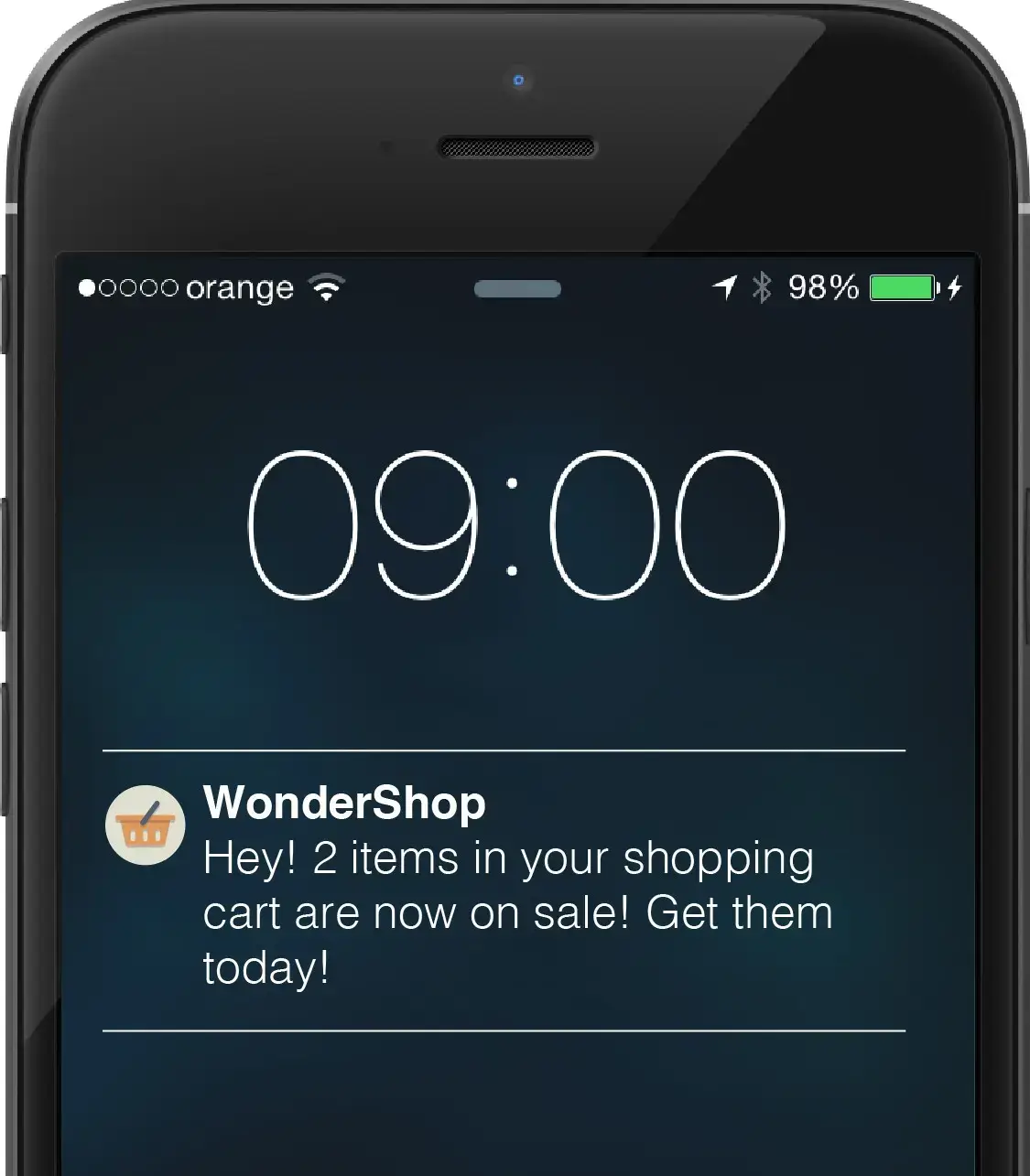
There’s little data available on the effectiveness of push notifications for abandoned cart retargeting yet, which just means that this channel is underutilized, and offers a huge opportunity for you to get a leg up on your competition.
How to Recapture Lost Revenue from Abandoned Carts
Using the insights gained from these shopping cart abandonment statistics, here are seven tips to help you reduce cart abandonment and capture more lost sales.
Simplify Your Checkout
A simple, smooth checkout experience will result in significantly fewer abandoned carts.
Of the top five most common reasons for people to abandon their cart, two are related to checkout processes with too much friction. A long and complicated checkout process is a surefire way to make excited customers turn around, give up and go somewhere else.
Make your checkout flow fast, requiring as few clicks and form submissions as possible (particularly on mobile).
Offer Guest Checkout
It’s understandable that you want to capture customer information when they make a purchase, as this is a powerful asset you have to incentivize repeat purchases.
But some shoppers don’t want their information stored by every company they purchase from online. 25% of shoppers have abandoned their cart for this very reason.
Giving the option for people to check out as a guest will result in a higher percentage of users completing their purchase.
Provide Fast and Cheap Delivery
Of the top five cart abandonment reasons, two relate to delivery.
You can put a damper on your customers’ excitement to buy when they get to checkout and see exorbitant shipping prices, or see that they’ll be waiting a long time until they get their product.
We want fast shipping, and we want it cheap (ideally free). Give that to shoppers and fewer of them will dump their cart before buying.
Build Trust Signals
Trust is a significant barrier between online retailers and potential customers. Online stores need to break through this barrier with multiple trust signals, to make customers feel comfortable about making a purchase.
This means giving shoppers the confidence that they’re buying a high-quality product, and that information they enter into this website will be safe.
Build signals to overcome the barrier of trust, such as customer reviews and testimonials, integrations with trusted payment gateways, and consumer guarantees.
Make Sure Your Website is Fast and Bug-Free
Avoid any technical issues that are going to result in shoppers abandoning their carts.
Slow load speed or bugs with your website make for a frustrating user experience, as well as a negative trust signal.
If a potential customer has to wait around for a number of seconds for the checkout page to load, that’s a big point of friction, which is often going to result in shoppers giving up and finding another place to shop.
Improve Mobile Usability
Data shows that mobile users abandon their carts significantly more than those on desktop. That’s because the checkout experience is generally a lot less intuitive on mobile devices.
Some sites are poorly optimized for mobile, but even those that are mobile-friendly tend to present more friction in checking out, specifically when it comes to entering forms and filling out delivery/payment information.
Mobile commerce currently makes up 38% of all digital spending in the US, which means there’s a lot of potential revenue out there for online stores that embrace mobile shoppers.
Making sure your site is responsive on mobile comes first. On top of that, make it as easy as possible for users to get through the checkout when they’re on mobile, by reducing form submissions, saving customer details for easy checkout, and integrating with mobile payment solutions.
Follow Up with Abandoned Carts
With the simple, cost-effective methods available to reach out to customers and recapture lost revenue from abandoned carts, there’s no excuse not to put this to use.
Set up abandoned cart campaigns with email and retargeting ads and, if you have the ability, push notifications too.
For more tips on how to reduce cart abandonment, plus a deep dive into the cart abandonment topic, check out this post.
Reduce Abandoned Carts with Your Own Mobile App
One of the best things you can do to improve your abandoned cart rate is to launch your own mobile app.
Mobile apps provide a more contained shopping experience, free from the distractions of other browser tabs, which often pull users’ attention away from completing their purchase.
They also provide a smooth shopping experience on mobile, make it easy to save your user’s information for frictionless checkout, and act as a positive trust signal.
Possibly the best thing about mobile apps when it comes to cart abandonment is that they give you the full power of mobile push notifications, the most effective tool to reach out and recapture abandoned carts.
MobiLoud lets any eCommerce store launch their own app, without the need to pay for and manage a complicated and expensive development team. MobiLoud does it all for you, from converting your website to mobile apps, to submitting your app to the app stores, and even keeping your app up-to-date and bug-free moving forward.

You can go live with an app in less than a month, for under four figures upfront - a far cry from the hundreds of thousands of dollars it usually takes to develop an app.
Launching your own shopping app is a great way to boost average order value, conversion rate, retention rate, reduce abandoned carts, and position yourself as an authoritative and trustworthy brand. And for what it costs you to launch an app with MobiLoud, it’s hard not to come out with a positive ROI.
Get a free preview of your app and schedule a free, personalized demo to learn more about the process, and see why your store can elevate to new heights by building a mobile app today.
Sources
Baymard Institute | Statista | SaleCycle | HotJar | Contentsquare | Statista | Swrve | Statista | MotoCMS | Moosend | Klaviyo
FAQs
Convert your website into a mobile app







